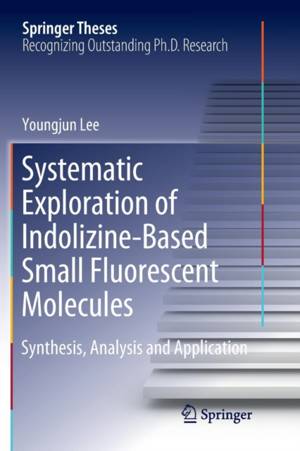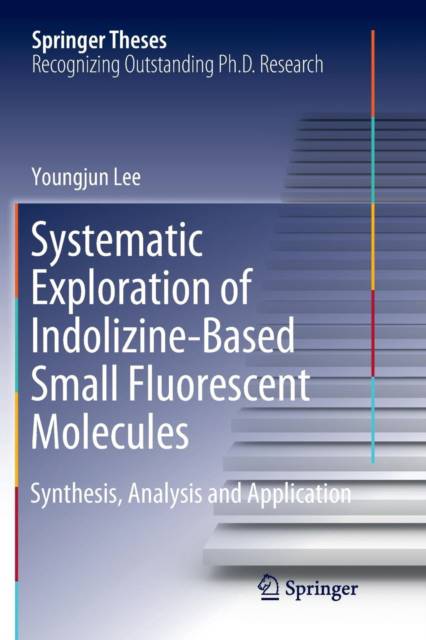
- Afhalen na 1 uur in een winkel met voorraad
- Gratis thuislevering in België vanaf € 30
- Ruim aanbod met 7 miljoen producten
- Afhalen na 1 uur in een winkel met voorraad
- Gratis thuislevering in België vanaf € 30
- Ruim aanbod met 7 miljoen producten
Zoeken
Systematic Exploration of Indolizine-Based Small Fluorescent Molecules
Synthesis, Analysis and Application
Youngjun Lee
€ 167,95
+ 335 punten
Uitvoering
Omschrijving
This thesis describes an in-depth study of an indolizine-based fluorophore, from understanding of its structure-photophysical property relationship to its application as a useful biological reporter. Organic fluorophores have been extensively used in the field of molecular biology owing to their excellent photophysical property, suitable cell permeability, and synthetic flexibility. Understanding of the structure-photophysical property relationship of a given fluorophore often paves the road to the development of valuable molecular probes to visualize and transcribe biological networks. In this thesis, respective chapters deal with molecular design, organic synthesis, structure-property analysis, and quantum-mechanical interpretation of unexplored family of indolizine-based molecules. This systematic exploration has led to rational development of a new microalgae lipid droplet probe, colorful bioorthogonal fluorogenic probes, and a bright mitochondrial probe, working underlive cell conditions. Harnessing the optical properties of a given fluorophore has been an important topic for a couple of decades, both in industry and in academia. This thesis provides useful insights for the improvement and development of unique small fluorescent materials, or optical materials.
Specificaties
Betrokkenen
- Auteur(s):
- Uitgeverij:
Inhoud
- Aantal bladzijden:
- 187
- Taal:
- Engels
- Reeks:
Eigenschappen
- Productcode (EAN):
- 9789811346606
- Verschijningsdatum:
- 23/12/2018
- Uitvoering:
- Paperback
- Formaat:
- Trade paperback (VS)
- Afmetingen:
- 156 mm x 234 mm
- Gewicht:
- 308 g

Alleen bij Standaard Boekhandel
+ 335 punten op je klantenkaart van Standaard Boekhandel
Beoordelingen
We publiceren alleen reviews die voldoen aan de voorwaarden voor reviews. Bekijk onze voorwaarden voor reviews.











